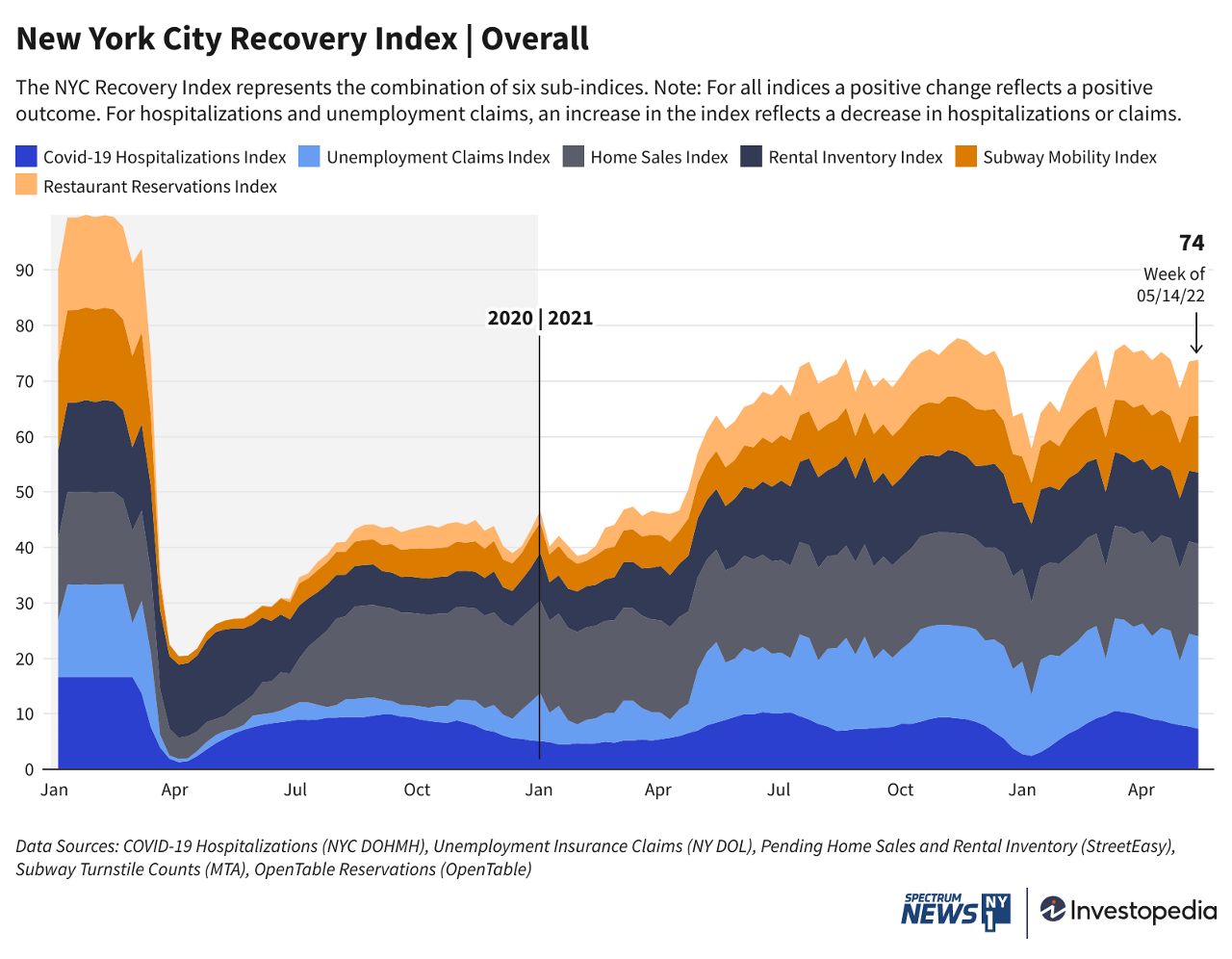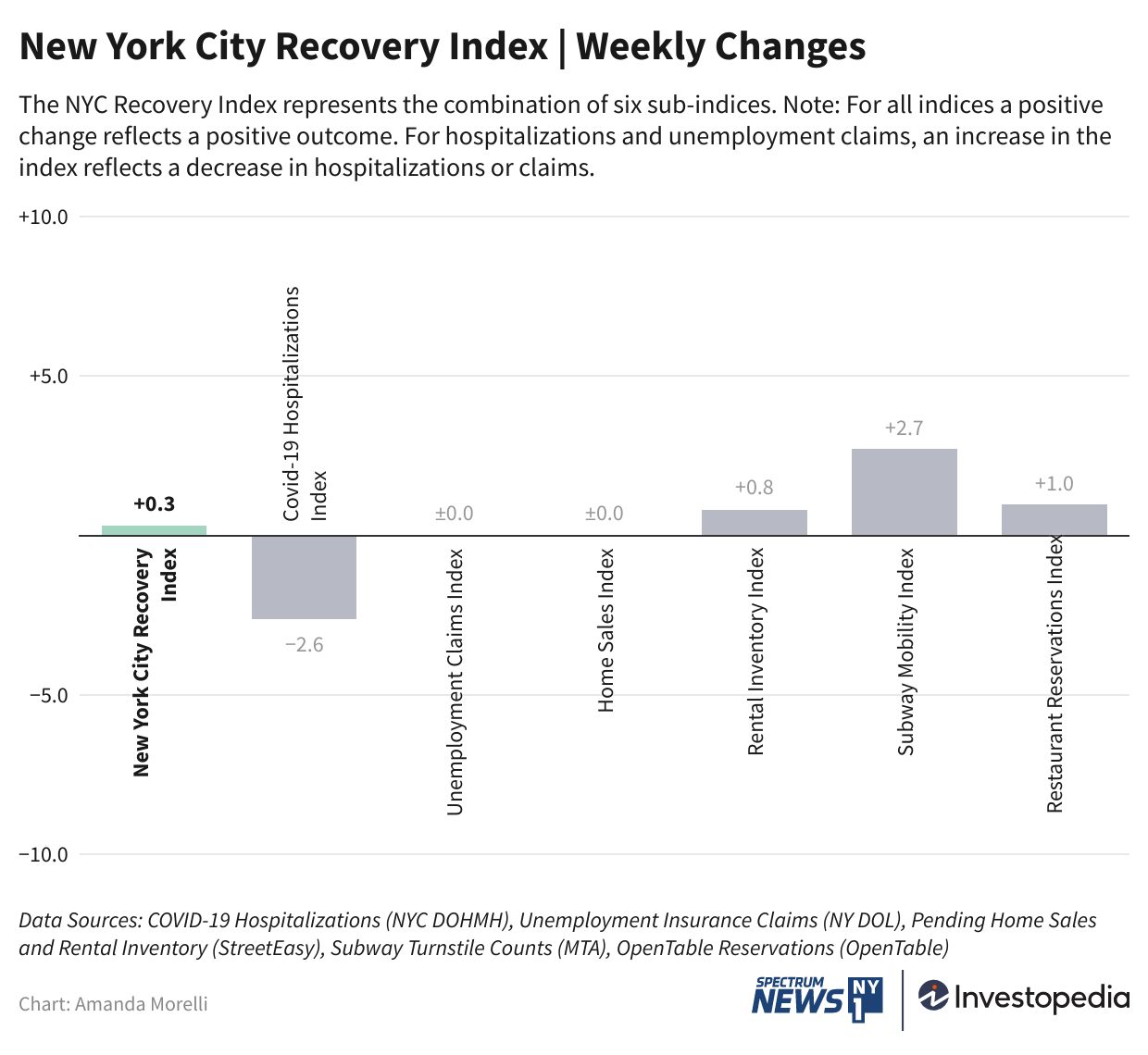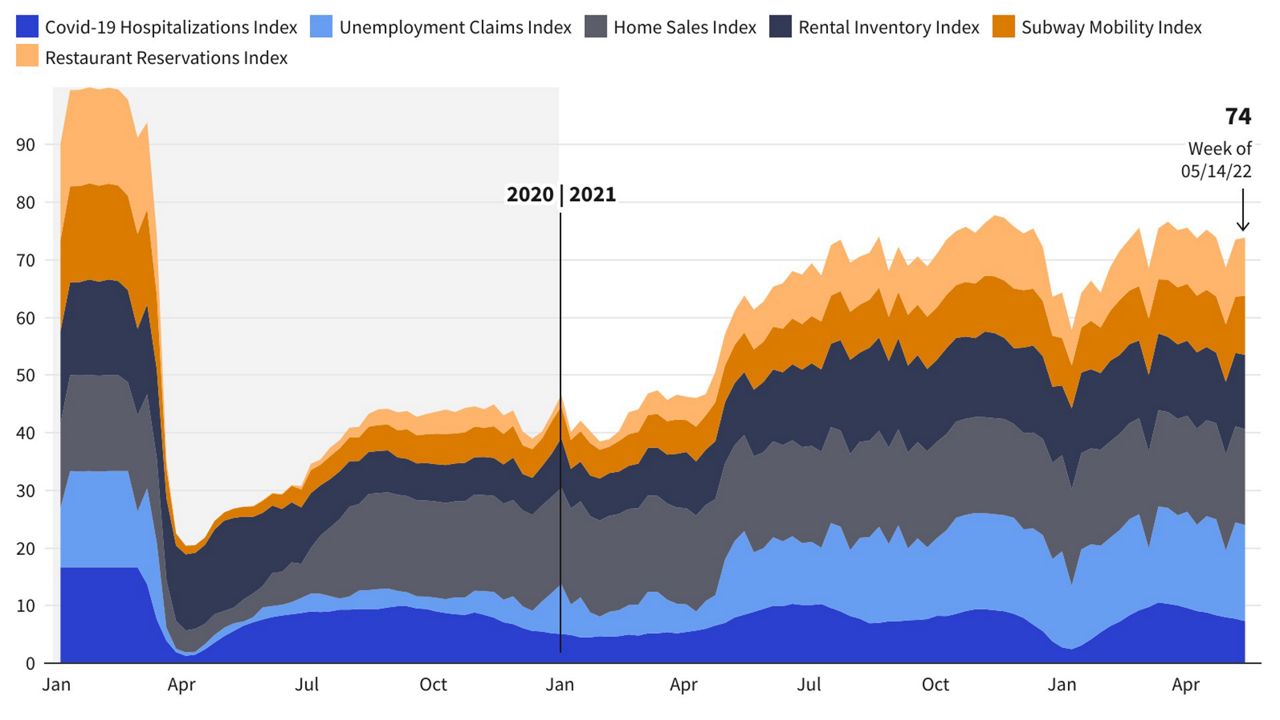New York’s City’s economic recovery stalled over the week ended May 14, as the index was unchanged at a score of 74 out of 100. Gains were recorded in rental availability, subway ridership, and restaurant reservations, however, these positive developments were offset by a continued rise in COVID-19 hospitalizations, which recorded their ninth consecutive weekly increase amid a worsening regional and national outlook for COVID-19 infection rates.

New York City’s economic recovery stands at a score of 74 out of 100, according to the New York City Recovery Index, a joint project between Investopedia and NY1. Over two years into the pandemic, New York City’s economic recovery is just under three-quarters of the way back to pre-pandemic levels.

COVID-19 Hospitalization Rate Accelerates
The COVID-19 hospitalization rate in New York City rose again for the ninth consecutive week, to 92 average daily hospitalizations. The rate rose by 18 hospitalizations from a week prior—a faster pace than previous weeks—indicating a notable acceleration. With this week’s increase, the seven-day average of hospital admissions is now over five times higher than the post-omicron low recorded in early March. The acceleration in new hospitalizations reflects higher infection rates both citywide and across the U.S., as the nation grapples with the rise of new omicron subvariants.
The CDC continues to project that 100% of new cases are attributable to the omicron variant, with the rapidly-growing BA.2.12.1 subvariant now accounting for 73.1% of new cases. Region 2 of the Department of Health and Human Services, which encompasses New York, New Jersey, Puerto Rico, and the U.S. Virgin Islands, continues to have the highest prevalence of the BA.2.12.1 strain of all ten regions designated by the CDC. The share of fully vaccinated New York City residents continues to inch higher, with 78.4% now fully inoculated against COVID-19, according to NYC Health data. Since the start of the pandemic over two years ago, nearly 2.47 million cases and 40,348 deaths have been recorded in New York City.
Unemployment Claims Fall
Unemployment insurance (UI) claims for the week ended May 14 fell from 5,970 to 5,870 total claims. UI claims remain considerably below pre-pandemic levels, as the rolling average of claims tracking the equivalent week of May 2019 totaled 8,023 claims. As such, unemployment claims are currently 27% below pre-pandemic levels and considered fully recovered, amid a historically tight national labor market.
Home Sales Decline Again
Pending home sales in New York City declined for the second consecutive week, with 652 home sales recorded for the week of May 14 compared to 709 during the week of May 7. Despite the recent decline, home sales remain well above pre-pandemic levels, 39% above the average for 2019, and are considered fully recovered. Breaking down sales by borough, Manhattan continues to lead the citywide average gains, with sales 48% above the 2019 baseline. This exceeds the rates of Brooklyn and Queens, with home sales 38% and 21% above pre-pandemic levels, respectively.
Rental Vacancies Rise Significantly
There were 13,706 available residences recorded in the city’s rental market for the week of May 14, a rise of 295 compared to the previous week. This week’s gain marks a notable increase as the summer season approaches, exceeding the typical seasonal increase during this time of year. The greater-than-expected rise in availability is an encouraging sign for the city’s rental market, with rentals now lagging the pre-pandemic average by about 1,700 units. The rental subindex currently stands at a score of 77 out of 100.
Subway Ridership Recovers Strongly
Subway ridership experienced a strong gain during the week of May 14, with the trailing seven-day average rising from 41.3% to 38.6% below the pre-pandemic baseline. This is the best result for the subway ridership since early December, just before the omicron wave severely affected ridership, placing the seven-day average firmly above the threshold of 40% below pre-pandemic levels. For the week, the Metropolitan Transportation Authority (MTA) reported a trailing seven-day average of 2.91 million riders.
Restaurant Reservations Edge Higher
Restaurant reservations rose slightly for the second consecutive week, rising from 40.6% below the pre-pandemic level to 39.6% below. The restaurant reservation rate is now just below the rate recorded during the week of April 23, matching the third-best rate in the history of the index since the onset of the pandemic. Continued warm weather ahead of the start of summer could act as a tailwind for reservations, potentially laying the groundwork for a faster recovery in the weeks ahead.




